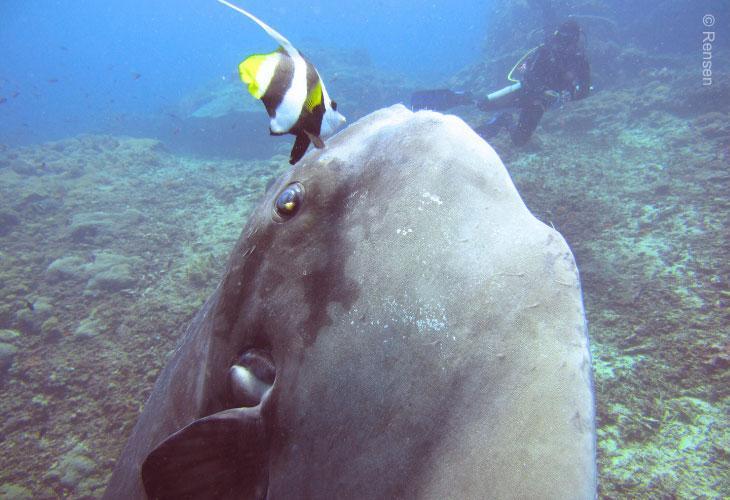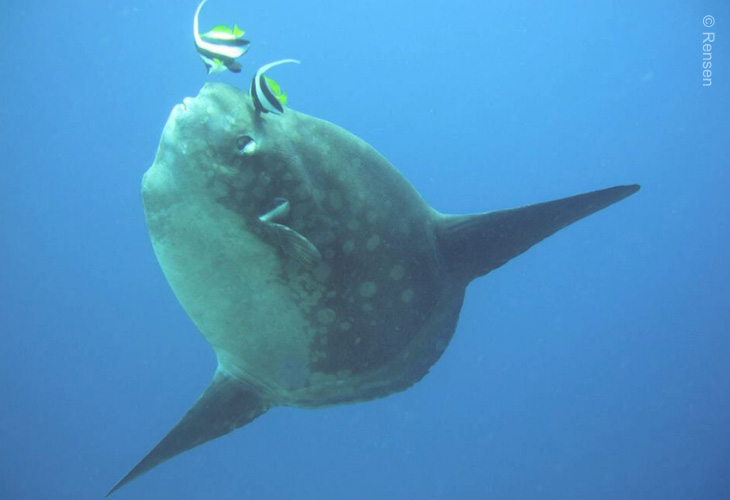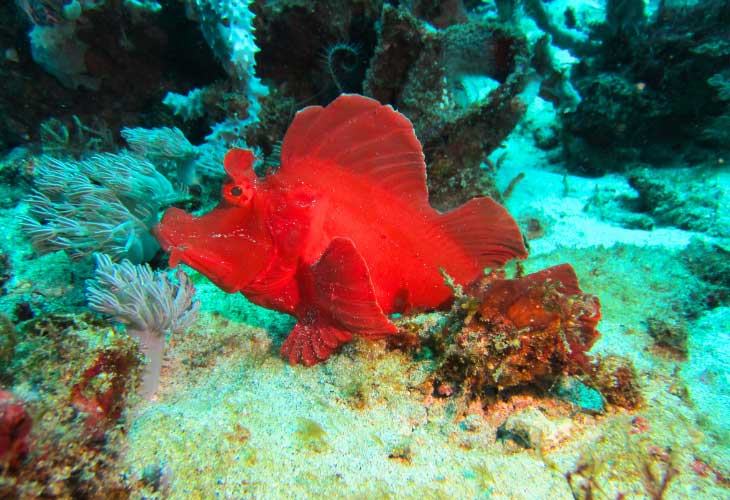The Basking Behaviour of Molas: An Essential Part of External Parasite Removal
If you’ve ever been diving in Bali and spotted a giant, pancake-shaped fish floating sideways near the surface, you’ve probably encountered a Mola alexandrini — though most divers call it Mola-Mola. These ocean sunfish are truly unique, not only for their odd appearance but also for their fascinating basking behaviour.
Why Do Molas Bask in the Sun?
At first glance, it might seem like Molas are simply relaxing near the surface. In reality, this behaviour is far from lazy — it’s a vital survival strategy. After spending time in the cold, dark depths, basking in shallow water allows them to warm up and, more importantly, visit reef cleaning stations where smaller fish help remove parasites.

The Parasite Problem
Molas are unfortunately prone to carrying a wide variety of parasites, both external and internal. These parasites can cause skin lesions, sores, and infections, making life difficult for the gentle sunfish. Left untreated, they can weaken the fish and leave it more vulnerable to disease.
Cleaning Stations: The Ocean’s Health Clinics
In reef areas, Molas position themselves vertically or horizontally to give cleaner fish — such as bannerfish, butterflyfish, and angelfish — access to their skin and fins. These smaller fish pick off parasites, providing the Mola with much-needed relief while enjoying a nutritious snack in return. It’s a beautiful example of symbiosis in action.

Observing Molas Respectfully
For divers and snorkellers, witnessing a Mola’s basking and cleaning routine is a truly special experience. However, it’s important to observe from a respectful distance. Disturbing them can interrupt their essential cleaning process — something they rely on to stay healthy.
Ready to see these majestic creatures up close? Join our exclusive 2025 Mola Mola Dive Experience and witness the basking behaviour of Molas in Bali’s crystal-clear waters. 🌊 Secure your place today for a front-row encounter with one of the ocean’s most extraordinary species — an adventure you’ll never forget.
By Mardia, AMD-B’s 2023 Divemaster Internship










